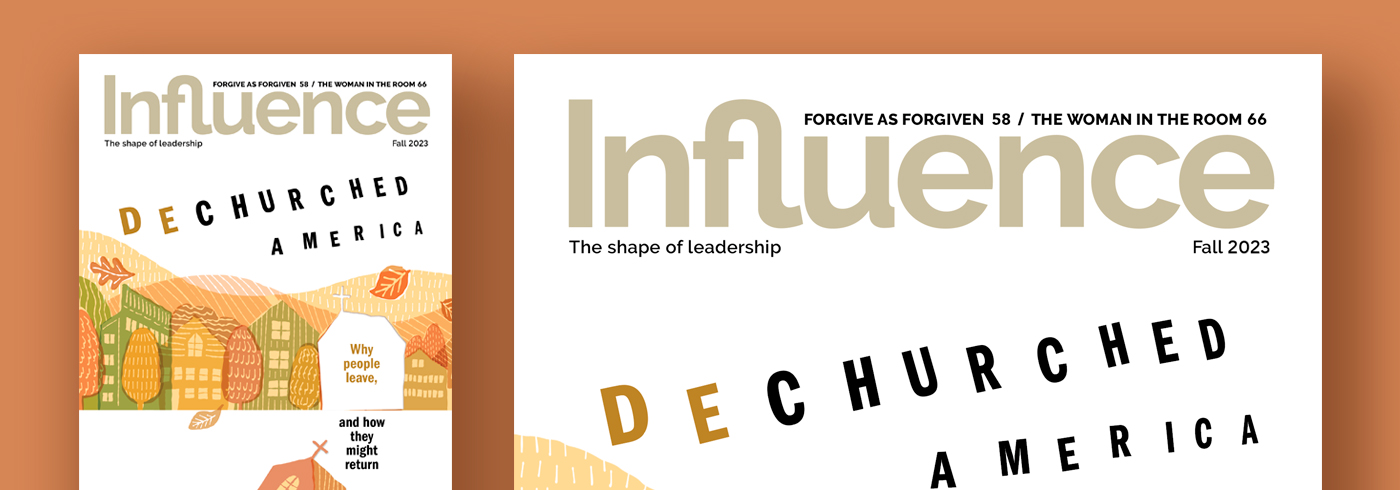Shifting Leadership Trends in A Post-Christian Culture
Taking the message of Christ to a new generation
At present, about 70 percent of Americans self-identify as Christians. However, that self-identification is declining. Rapidly. Over the past 20 years, self-identified Christians have declined by 1 percent per year as a share of the American population. (One study put the rate at a 2 percent annual decline, but it was an outlier.) If the 1 percent annual decline holds, self-identified Christians will make up just 50 percent of the population in 20 years.
Brief Explanation
Now that does not mean that 1 percent of the Christians in America leave the faith each year. It does mean that 1 percent fewer Americans describe themselves as Christians each year. Most studies, particularly the recent Pew Religions Landscape study, show the devout — which is you if you are reading this magazine — have remained pretty steady.
So, the church is not collapsing. As such, the sky is not falling. However, the ground is shifting.
Before (and still now, for a while), nominal Christianity reigned supreme. Now someone else is emerging. We call that post-Christendom.
Post-Christendom
Yesterday I walked through the Billy Graham Center Museum. As the executive director of the Billy Graham Center, giving tours to friends visiting from out of town is one of the perks. As I was walking, I couldn’t help but reflect on how incredibly different the world is from when Billy Graham started his ministry.
It wasn’t nostalgia; it was just a sense that how and why we lead is shifting. Just as Billy Graham led well in his time, we must do so in ours.
The Previous Home Court: Deference
Billy Graham was a leader in a time when people had a natural and familial respect for the moral authority of religious leaders. His leadership was naturally affirmed, and he lived and ministered within a culture where the clear majority of people considered themselves Christian.
According to the American Religious Identification Survey, in 1990 around 86 percent of the entire American population self-identified as Christian. Within this landscape, Graham was an attractive, spiritual, morally committed male who represented what it meant to be an “All-American” in a way that God used. His voice carried weight with presidents and coal miners alike, and God sincerely used Graham to draw millions of people to Jesus and influence a generation.
Yet many of the 86 percent called themselves “Christian” without being spiritually or confessionally active. To use our language, a whole lot of them called themselves Christians, but they had not been changed by Christ. Yet, even so, we had a home court cultural advantage. We just didn’t have as large of a team as we thought. There was an attitude of deference and acceptance, with only around a fraction of that professing population actually forming their lives around a committed Christian belief.
The Current Reality: Greater Intellectual Honesty
Since 1990, we have seen a huge statistical shift with the religious “Nones,” those identifying as not having a religious affiliation.
Two languages are emerging: the public sphere of secularism and the message of the gospel of Jesus.
“The most significant influence on American religious geography over time has been the increase in the Nones, or No Religion bloc. ... nationally the Nones more than doubled in numbers from 1990 to 2008 and almost doubled their share of the adult population, from 8% in 1990 to 15% in 2008. Moreover, the Nones increased in number and proportion in every state, Census Division and Region of the country from 1990 to 2008. No other religious bloc has kept such a pace in every state” (ARIS Report 2008, pg. 17).
The Oprah-fication of American spirituality has morphed cultural Christians away from a default of “Christian” to a default of “No Religion.” And, that’s increasing at 1 percent per year.
So how do we prepare ourselves for the future now? To use a Gretzky-ism, how do we skate where the puck is going?
The Shift in Leadership We Need
For the second half of the 20th century, we had a statistically overwhelming number of people who confessed a “Christian” faith without consistent Christian practices and engagement. I don’t think this helped the Church.
As our world becomes more secular (going public with practiced nonbelief), it is forcing evangelicals to acknowledge the reality of what statisticians have known for a while. We are not a religious majority, but, instead, we are a convictional minority.
As such, we need new ways where we become more missional and more evangelistic. To become these things, we need a shift in leadership.
Leadership Shifts
Part of the leadership shift is in how we approach and engage with the public sphere. Since the trajectories are moving in a more secular direction, Christian leadership will need to become bilingual.
Two languages are emerging: the public sphere of secularism and the message of the gospel of Jesus. As evangelicals (and biblical values) become more marginalized, we need to learn how to speak powerfully from the margins as translators, holding even stronger to Christian practices while becoming better students of the world around us.
As we move forward, we must do so with thoughtfulness and careful engagement. The message of the gospel is transcultural and transtemporal, and as the Christian faith becomes more marginalized in American society, I am confident leaders will rise to spur the Church to engage more faithfully on mission.
As Billy Graham faithfully and proactively spoke and led in a Christian culture, we will see more godly men and women follow in his steps if they make a leadership shift for a post-Christendom culture.
This article originally appeared in the August/September 2017 edition of Influence magazine.
Influence Magazine & The Healthy Church Network
© 2025 Assemblies of God

